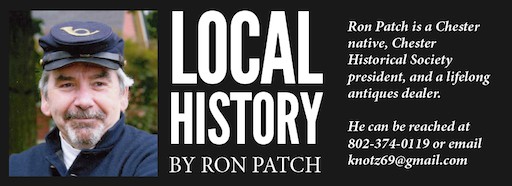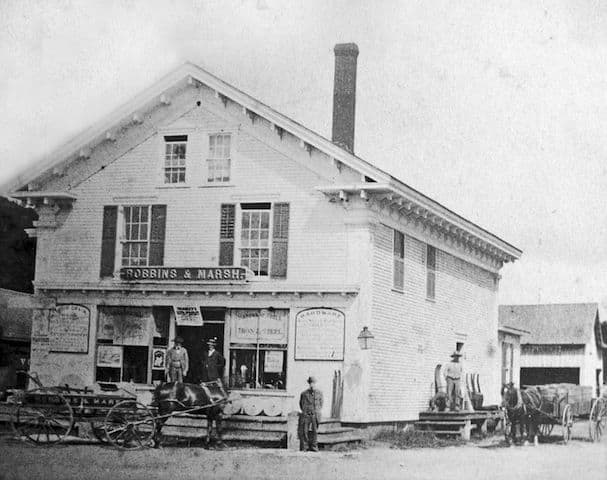
Here is the history of the Chester Depot railroad station as I know it. When that first little engine from Bellows Falls arrived in the Depot in July of 1849, a crowd of dignitaries and spectators had gathered.
Robert “Bob” Adams of Bellows Falls supplied Chester Historical Society with history of the depot stations. Bob had been a Rutland Railroad employee and later president of Green Mountain Railroad.

Bob records in 1849 a small wood-frame station was erected beside today’s Smitty’s Chester Market. By 1851, passenger traffic had increased exponentially. A new and larger station was needed. In 1851 a wood-frame building was built at the location of the current brick station.
It has been a mystery what the 1851 station looked like. No photos are known to exist of this station. Bob had never seen a photo nor had the Rutland Railroad Historical Society.
A few years ago, John Leon “Gramp” Spaulding donated the photo included with this article to Chester Historical Society. It was something Gramp’s father, Ed, picked up when running his auction business around Chester. Gramp remembered his father saying it was a hardware convention involving a man named Robbins.
In 1858 P.H. Robbins built the hardware store next to the station. Today we know this building as Cumming’s Hardware.
Making the case
From a handwritten affidavit in the collection of the Chester Historical Society: “This is to certify that some time in the month of December 1870 I heard N.F. Shedd Esq of Chester Vt. make the following statements on the platform at the Depot in Chester. I came out of the Chester House [and] went to the Depot. Mr Shedd was there talking with several others about Mr Blaisdell moving his shed in front of his house. He Shedd said that Blaisdell had done one good thing for it had the effect of keeping J.R. Richardson from building on the Rail Road land near Blaisdell house [and] that the neighbors ought to take hold [and] help him move the shed back again.
“Mr F. H. Bates then asked Mr Shedd what the trouble was between him [and] Richardson. Shedd replied that if Richardson would burn his own buildings he would burn other peoples. Some one then asked him if he thought Richardson did burn the buildings. Shedd replied I do [and] if you knew as much about it as I do you would think so too. I know he did. Richardson is a damned mean cuss [and] I always knew it. I afterwards asked Mr John Kelley who was present at the time what he thought of the remarks that Mr Shedd made at the Depot. Mr Kelley replied when I make any such statements as that about a man I shall be prepared to back them up with proof for I call that a serious charge to make publically against a man even if you have reason to think they are true.
“Chester Vt. March 22/71
“J.A. Parker
“F H Bates”

“This is to certify that some time in the month of December 1870 I heard N.F. Shedd Esq of Chester Vt. make the following statements on the platform at the Depot in Chester.”
Mention of the platform is a crucial piece of evidence. At no time in the past did the brick station we have today ever have a platform. Mention of the platform is key to solving this mystery.
Richardson owned a large wood-frame building where Town Hall sits today. On the right is the Marsh place. To the left was Shedd’s place. The two neighbors must have had a long list of grievances. Richardson sued Shedd for libel. Court papers do exist. The outcome is unknown.
The Chester House mentioned in the affidavit was located where Salon 2000 is today. Chester House was destroyed by fire in 1898. Blaisdell’s is across the street from Smitty’s.
This circa 1860s photo clearly shows a platform. You can see another building behind. The 1869 Beers Atlas of Windsor County shows the wood-frame station with a couple attached buildings to the rear.
I’m convinced this photo is the 1851 station destined to burn in 1871. Bob Adams said the current brick station was known as the “Ogdensburg” design.
The photo is a mammoth plate albumen photo. It measures 18 inches by 23 inches. I cropped it to the size you see here. On the platform can be seen an American Indian and an African American.
This week’s old saying: “Dirty hands make clean money.”